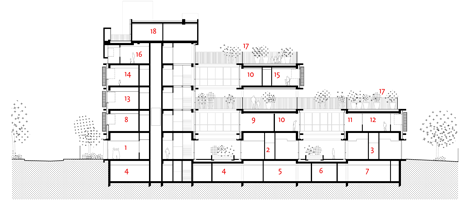Marjan Hessamfar & Joe Verons Associates completes child welfare facility in Paris
Golden louvred shutters add a warm contrast to the otherwise monochrome facades of this child welfare facility in Paris by French architects Marjan Hessamfar & Joe Verons Associates (+ slideshow).
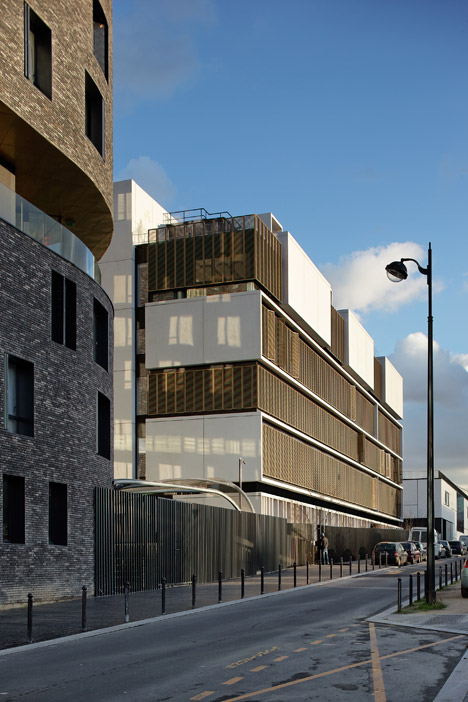
The Maison d'accueil de l'enfance Eleanor Roosevelt in Paris's 20th arrondissement provides emergency shelter for children and teenagers. Marjan Hessamfar & Joe Verons Associates was asked to design a building to provide more space and better facilities than its previous site in the 14th arrondissement.
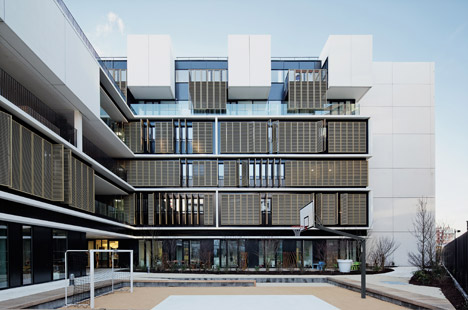
The requirements of the children informed the building's programme, which accommodates different ages groups on individual floors and incorporates various spaces for quiet relaxation or social activities.
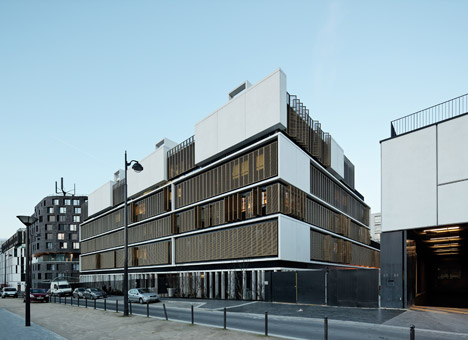
An angular plot oriented from north to south prompted the architects to implement an L-shaped plan that places the longest facades on the south and west edges so they are distanced from the neighbouring buildings and receive plenty of natural light.
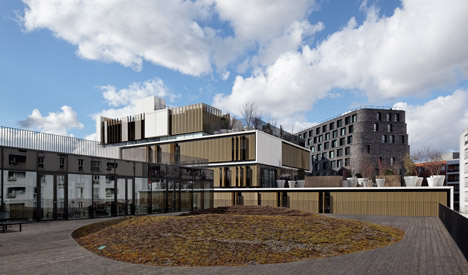
The building's perpendicular wings shelter a courtyard at its centre, which contains planted gardens and a sports area.
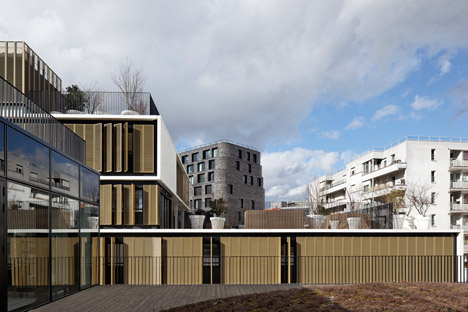
Terraces situated on the roofs of the different levels step down towards the courtyard and provide dedicated outdoor spaces on each storey.
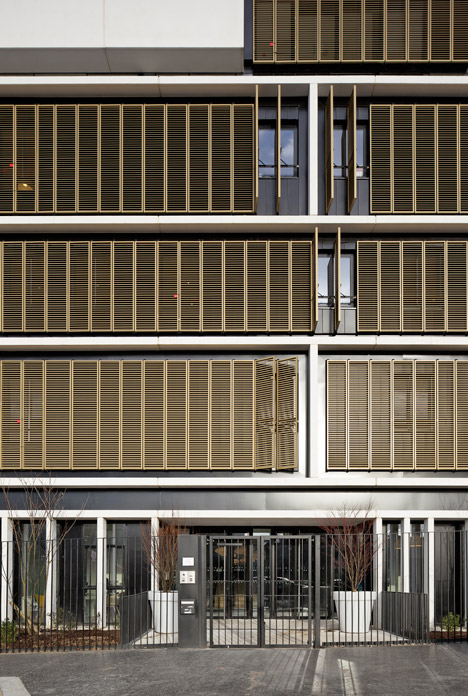
An entrance leads from the street to a bright lobby featuring a wooden reception desk. Corridors connect the lobby to offices, a waiting room, meeting room and healthcare facilities spread across the ground floor.
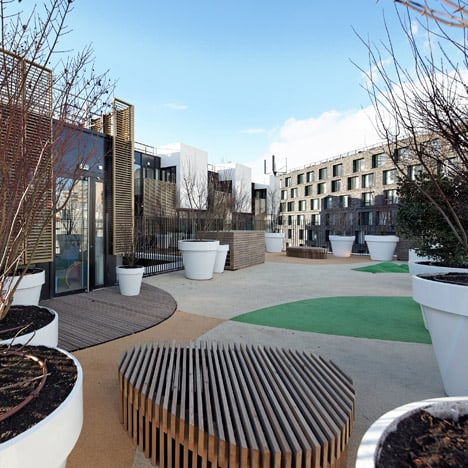
Spaces between administration offices in one of the wings create covered patios looking out onto the central courtyard.
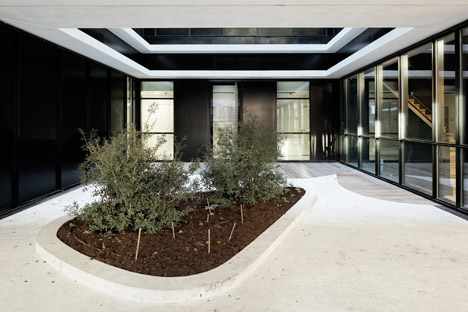
A consistent aesthetic is achieved by applying white concrete, black metal cladding and the anodised gold aluminium louvres on each facade.
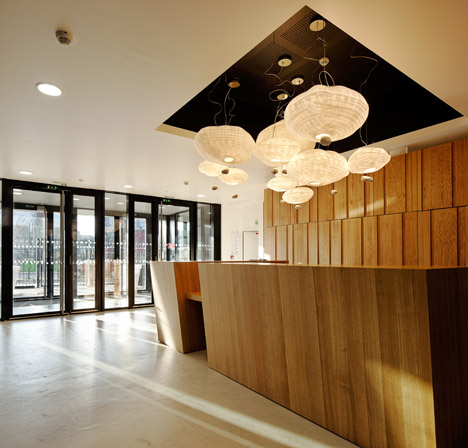
The louvred shutters provide privacy and reduce the amount of direct sunlight reaching the interior.
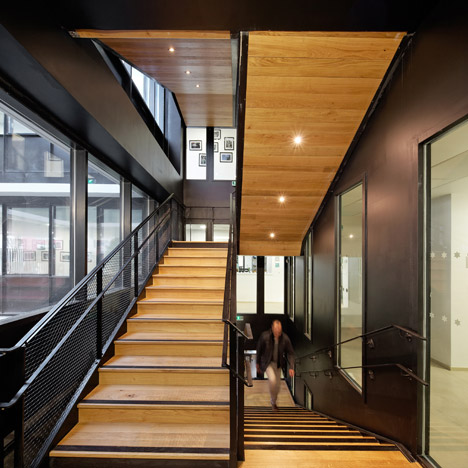
The facility's location close to two major ring roads led to the specification of self-cleaning concrete, which transforms pollution into harmless compounds that are washed away by rain.
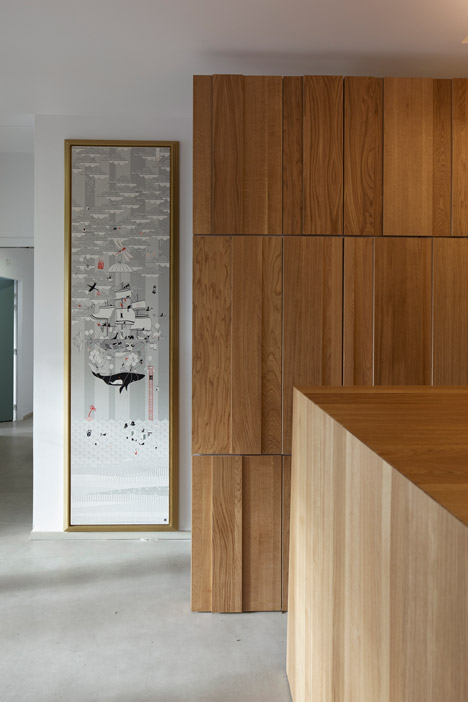
Interior spaces were designed to be flexible so the building can adapt to the changing needs of its occupants, with areas including corridors intended to perform multiple functions.
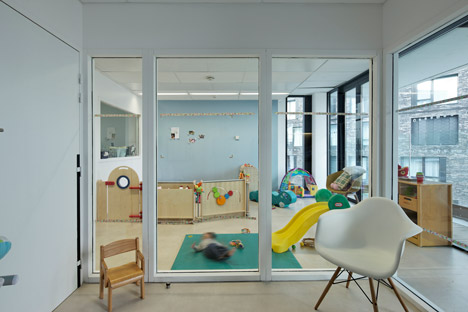
Furniture was largely custom-made and the main staircase was created as a feature, with solid wooden treads and black ironwork.
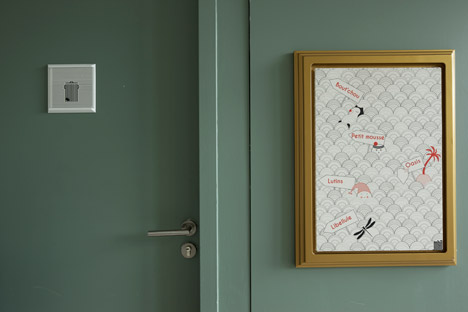
Photography is by Vincent Fillon.
Maison d'accueil de l'enfance, Paris, France
The main purpose of the centre is to provide practical, educational and psychological support to these children and teenagers. Moving the centre from its current location in the 14th arrondissement will allow an increase in capacity and will help broaden the centre's services. Semavip, a semi public company, is in charge of developing the area which already has a cinema, a residential circus and a park, Jardin public Serge Gainsbourg, which has been open to the public since the summer of 2010.
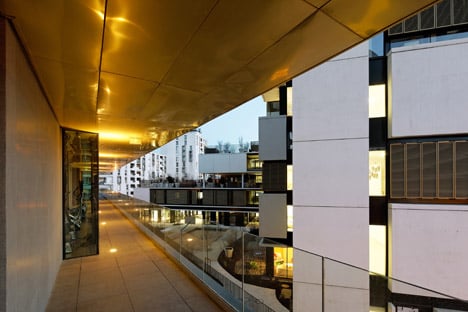
An emergency residential centre is both a children's shelter and a care home where young people feel welcomed, protected and looked after. It is also a transitional place, where family links, rather than being severed, are encouraged under calm and compassionate supervision. The notion of 'emergency' must not be sensed by children who indeed need to feel reassured: this is a place where, at long last, they can be completely safe. It is also paramount that every effort is made to ensure their continuous educational needs are met. With all this in mind, the architects designed the shelter as a shame where each floor is allocated to one age group only and where all children’s needs, from quiet time to group activity, are respected.
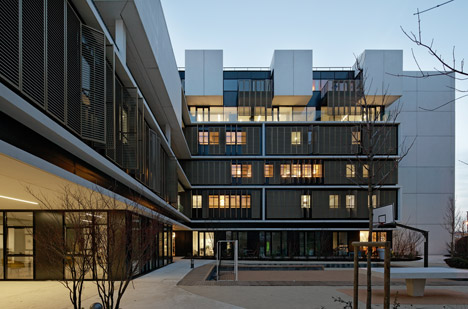
There are two major constraints on the site. Firstly, the core of the plot is north facing. Secondly, the architectural program is highly dense and is not easily accommodated with the principal development zone plans. This could potentially result in severe lack of light into the building. The architects therefore developed and L shaped structure with varying stepped levels in the centre, offering large recreational terraces on each floor. This layered system optimises access to daylight and open views at the very core of the building. However, to optimise access to daylight further still, the architects decided to position the buildings around enclosed gardens with two main facade walls to the south and the west.
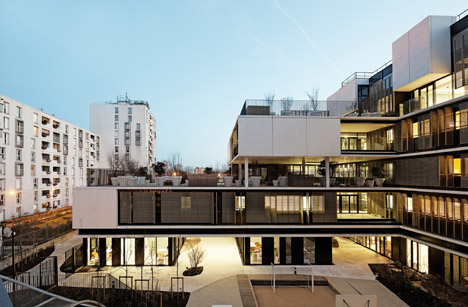
Since the building is open to the public (ERP), organisation of space is very complex. Each floor is meant as a single unit with its own specific use and therefore its own health and safety regulations. The creche on level 5 falls under R classification (French code of standards for education premises) whereas treatment and healthcare rooms on the ground floor and on level 4 fall under U classification (French code of standards for healthcare premises). The difficulty arose from managing different strict health and safety regulations, yet keeping a single identity for the whole building. For instance, the creche playground is made private and safe with the use of trees in large pots all around the area.
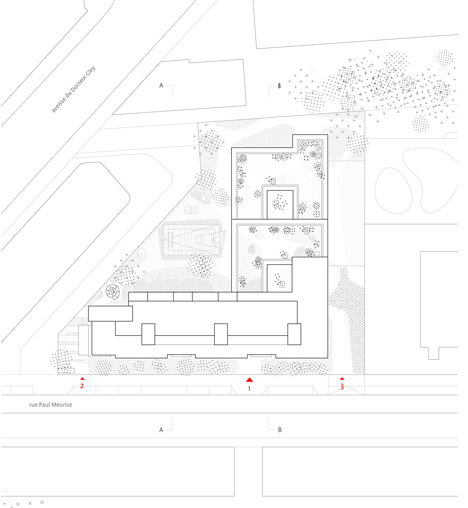
This type of institution is subject to constant change not only during the life of the building itself but also at all stages of the project. With this in mind, the architects have designed the building as a matrix giving scope for change not only once completed but also during the various stages of the project studies. For instance, the large corridors have not only be designed as passageways but can also have other purposes if need be.
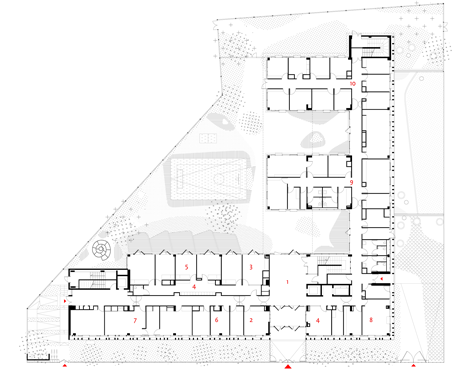
To maintain a homely feel throughout, the architects were also asked to design indoor signage and furniture. Regular consultation with staff helped them create poetic, fun and dream like pictograms on indoor sign posts. They also chose to make the main staircase a major focal point like in a stately home. Emphasis was put on designing purpose built furniture. The facade wall is wood framed with metal cladding whilst pillars, beams and floors are made from concrete. The concrete structure of beams and pillars gives the whole construction a certain degree of flexibility. This was necessary to ensure separate departments can function on different floors. Exterior precast concrete elements are made out of electroless white cement. Concrete is therefore self cleaning. It won’t change colour over time, and will keep its original look.
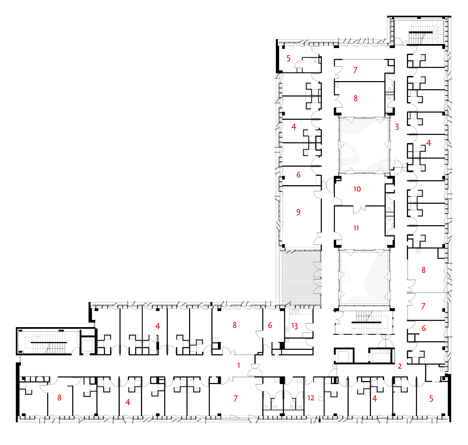
This choice of self cleaning material is important to combat bad weather and pollution due to intense traffic - there are two major Parisian ring roads nearby- This could otherwise discolour the exterior. Gold coloured louvre shutters are used to protect rooms from the sun and also to ensure users privacy. White concrete, gold shutters and black ironwork are used on all facades thus reinforcing a homogenous feel for the whole centre.
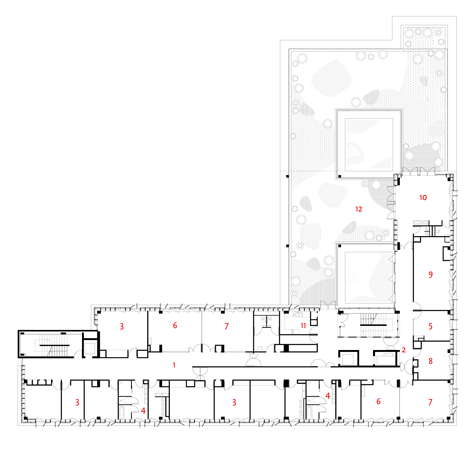
Architects: Marjan Hessamfar & Joe Verons Associates
Structural engineers: OTCE bet
Sustainable development engineers: Inddigo hqe
Contractor: DUMEZ
Area: 6225 sq m GEA
